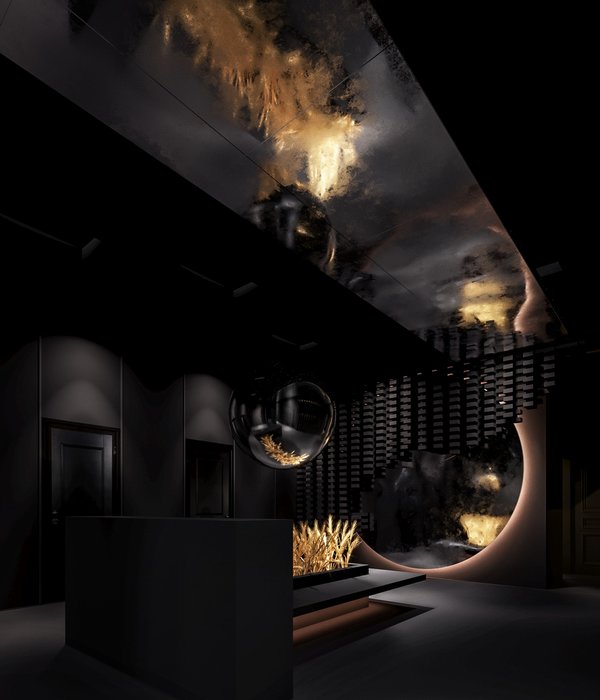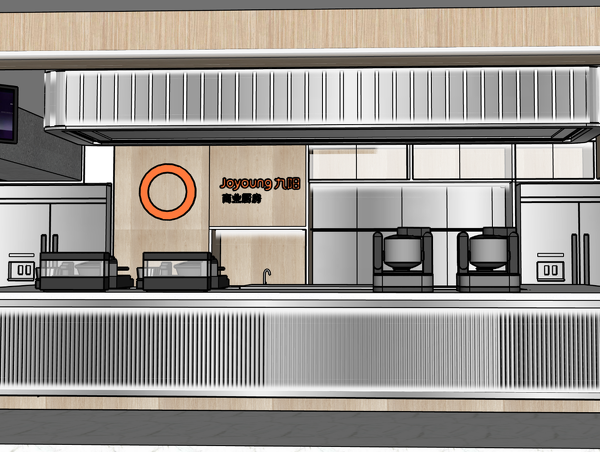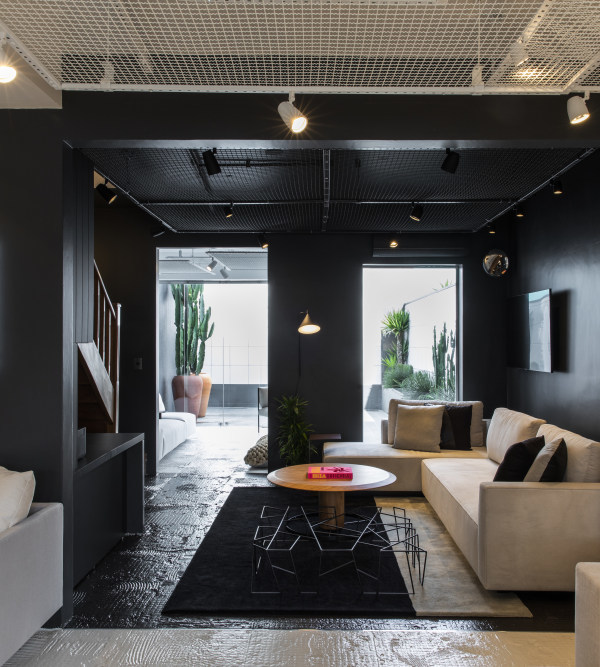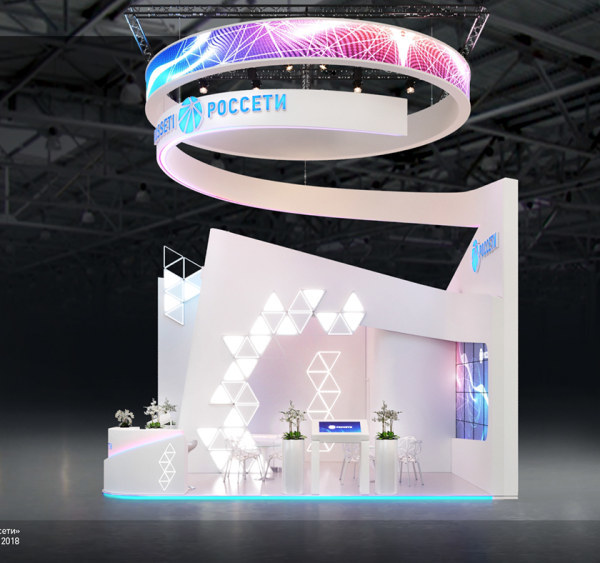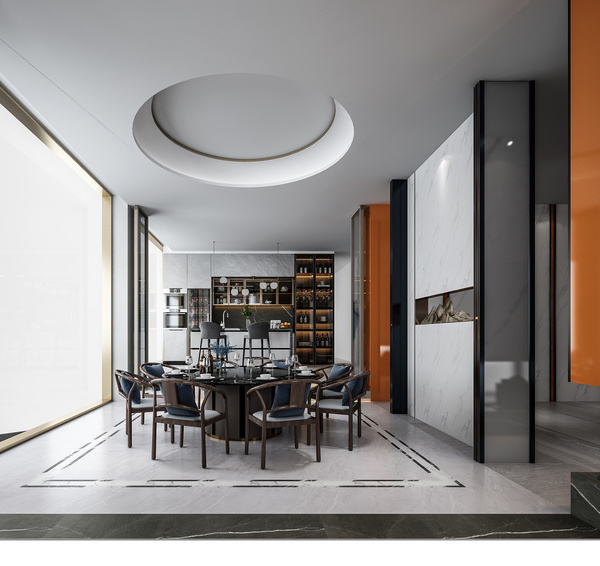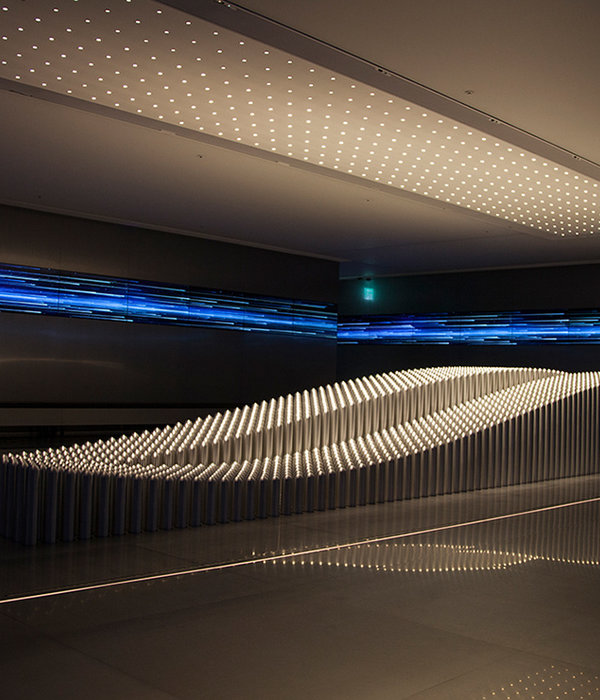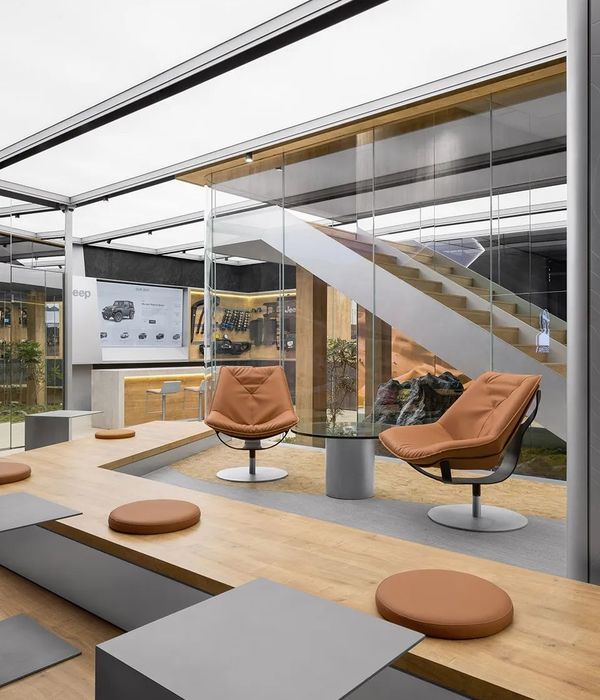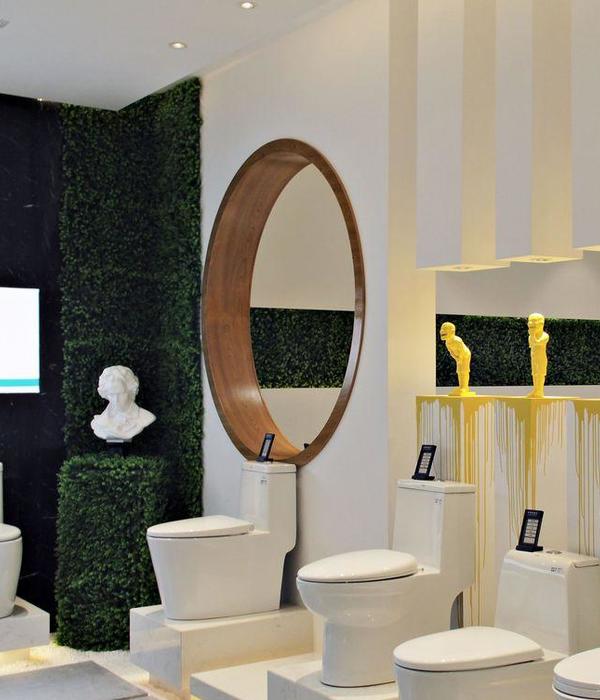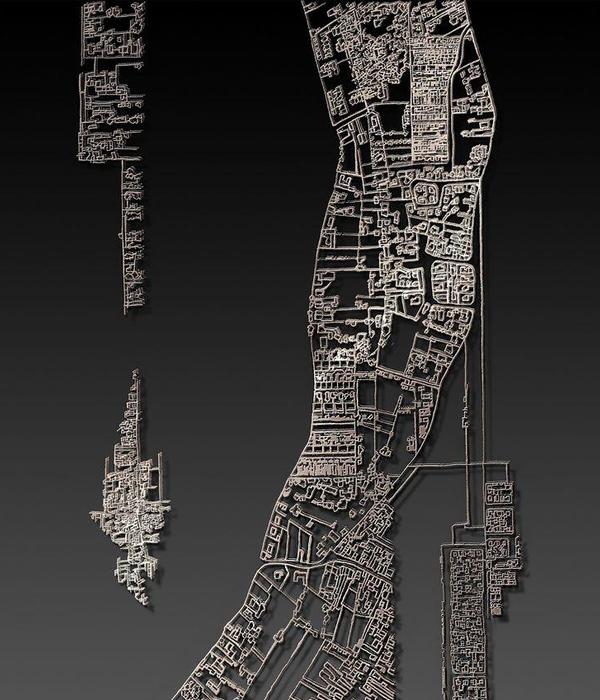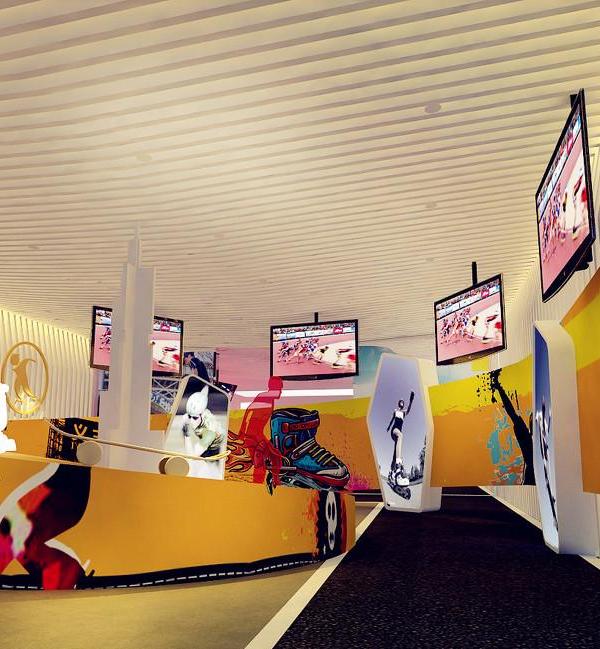Hofvijver漂浮花园
A floating garden in the Hofvijver
BlowUp艺术节为Hofvijver河带来了荷兰设计。这里成为了充气艺术品绽放的天堂。
A BlowUp brings Dutch Design to the Hofvijver. A lush paradise of blooming inflatable artworks.
▼河岸概览, overview of the river bank ©Ronald Smits
今年,BlowUp艺术节在城市的市中心:Hofvijver地区举行。该地区的历史可以追溯到13世纪。这个临时艺术节被设计成一个丰富的乐园,由荷兰设计界的精英们创作的大量平面艺术品组成。 Job事务所、Marcel Wanders、Sigrid Calon和Mieke Meijer工作室将在漂浮岛上展出他们的艺术作品。附近的景观,由Yverta大学 “城市绿色发展 “专业的学生在生态景观建筑师Deborah Treep的指导下设计,是一个带有水景的花园。
This year, BlowUp Art finds itself in the heart of the city: the Hofvijver, a historic location dating back to the thirteenth century. The temporary festival is designed as a lush paradise of a bulousin flatable artworks, created by the cream of Dutch design. Studio Job, Marcel Wanders,Sigrid Calon and Studio Mieke Meijer exhibit their artworks on a pontoon island. The greenery, designed as an a tistic garden with water features, was landscaped by students of Yverta ‘Urban Green Development’ under the guidance of ecological landscape architect Deborah Treep.
▼河岸景色, scenery at the river bank ©Ronald Smits
像水中漂浮的锅
Like a Pan in Water
根据Job Smeets所言,像 Suskeen Wiske、Gerrit Rietveld、Bieder meier 或猫王这样的主题都完全可以接受。Job Smeets不将文化区分为高等和低等,经典或者现代。在Job事务所,设计师使用前沿的高科技工具以及在荷兰几乎已经消失的传统工艺,例如青铜铸造、彩色玻璃或珐琅。普通的日常物件例如罐头或者锅都被完全改造,放大,弯曲,甚至在必要时,加上一个金色的鼻子。
According to Job Smeets(1969), subjects like Suskeen Wiske, Gerrit Rietveld, Bieder meier, or Elvis Presley are all perfectly acceptable. Job makes no distinction between high or low culture, classicism, or modernism.At Studio Job, work is done at a high level on unique pieces using the latest high-tech tools as well as traditional techniques that have all but disappeared in the Netherlands; bronze casting, stained glass, or enameling. Former everyday objects like a jerry can or a pan are completely transformed, enlarged, bent, and if necessary, adorned with a golden nose.
▼漂浮在水面上的锅, Like a Pan in Water©Ronald Smits
Job的作品不拘一格,很像一本漫画书,他从Weert 的一个简易棚屋发展成为在世界各大城市举办展览的真正的设计新星。锅(通常是高度抛光的金色或青铜色)也经常在他的作品中扮演重要角色。
With an eclectic body of work that strongly resembles a comic book, Job has evolved from a simple shed in Weert to a bonafide design super star with exhibitions in all major cities world-wide. And yes: the PAN, often highly polished in gold or bronze, frequently plays a significant role.
▼Job的作品, Job’s work ©Ronald Smits
“鸡蛋”
Eggs
Marcel Wanders设计了一系列奇妙的“鸡蛋”。这种鸡蛋造型在他漫长的产品和家具设计生涯中经常出现。在他设计的众多台灯、椅子和烛台中都可以发现鸡蛋状轮廓。Hofvijver河上的亮色装饰和反光的装置可以反射出游客,这些作品实际上反映了在民主中心的民众的形象:他们的观点时而相互冲突,时而又摇摆不定。
Marcel Wanders designed a collection of fantasy eggs. This egg shape is a recurring theme in his long career as a product and furniture designer. References to egg-like contours can be found in lamps, chairs, and candle sticks. The brightly decorated and reflecting eggs on the Hofvijver reflect the visitors and are actually portraits of passers-by in the heart of democracy: with opinions that sometimes clash, or get nudged to sway back upright.
▼一系列奇妙的“鸡蛋”, a collection of fantasy eggs ©Ronald Smits
▼反射出游客们的身影, reflect the visitors©Ronald Smits
在2014年,在阿姆斯特丹的Stedelijk博物馆举办了关于Marcel Wanders的回顾性展览。他的设计中的一条主线,从1996的标志性的“编织椅”开始,延续了一种叙事性的风格:一堆灯罩、超大的面具和流鼻涕的花瓶。
In 2014, the Stedelijk Museum Amsterdam hosted a retrospective exhibition of Marcel Wanders’ soeuvre(1963). The common thread in his designs, starting with the iconic ‘Knotted Chair’ in1996, is a narrative style: a stack of lamp shades, oversized masks, a snotty vase.
▼对周围环境的反射, reflects on the surrounding environment©Ronald Smits
植物园
Airboretum
Airboretum是Arboretum (植物园)的有趣变体,也是由Mieke Meijer工作室设计的三棵充气树组成的装置。从树干到树枝、侧枝和小枝,树状结构在连续的维度上重新焕发活力。逻辑的一致性在大自然中无处不在,从植物到整个星系都是如此。
‘Airboretum’ is a playful adaptation of ‘Arboretum’(a collection of living trees) signifies an installation of three air-inflated trees, designed by Studio Mieke Meijer. The tree-like structures rejuvenate in successive dimensions from trunk to branch, side branches, and twigs. Logical coherence is ubiquitous in nature; from plants to entire galaxies.
▼三棵充气树组成的装置, three air-inflated trees ©Ronald Smits
‘Airboretum’符合空间框架(Space Frames)的概念,Mieke Meijer工作室的空间介入作品在很多地方展出,包括中国的深圳和伦敦的国王十字街。空间框架(Space Frames)是模块化的元素,可以从一盏灯扩展到可占满整个广场的纪念性装置。产品设计师Mieke Meijer和她的搭档土木工程师Roy Letterlé将建筑意象和针对物品的具体化融合在一起。
The ‘Airboretum’ aligns with the concept of Space Frames; spatial interventions showcased by Studio Mieke Meijer in places like Shenzhen, China, and King’s Cross in London.The SpaceFrames are modular elements scalable from a single lamp to a monumental installation that could fill an entire square. The fusion of architectural imagery and object-oriented refinement stems from the back-grounds of product designer Mieke Meijer(1982) and her partnerRoy Letterlé(1978), a civil engineer.
▼充气树细节, air-inflated trees detail ©Ronald Smits
凉亭
Gazebo
Sigrid Calon的充气艺术作品是对首相的小塔的一种致敬。这一六边形的建筑据推测来源于15世纪的上半叶,并作为荷兰郡的一处夏季凉亭。Calon的艺术品再现了它原始功能的象征性和Calon希望在政治中体现的爱的开放性。
The inflatable artwork by Sigrid Calon is a tribute of sorts to the little tower of the Prime Minister. This octagonal building presumably dates back to the first half of the fourteenth century and served as a summer pavilion for the counts of Holland. Calon’s artwork recalls the symbolism of its original function and the loving openness that Calon would like to see reflected in politics.
▼充气凉亭, inflatable gazebo©Ronald Smits
作为一名视觉艺术家,她坚定的相信“直觉的表现力”,即图像的暗示超越了文字叙述的故事。Sigrid Calon原本是一名织物设计师,她享受和五彩斑斓的图案进行创作,而这些色彩变化对于她来说是无穷无尽的。因为在远处看起来很不错的图案也应该在细节处有趣。
As a visual artist, she strongly believes in ‘the expressive power of intuition’, in which the suggestion of images transcends literal stories. Originally trained as a textile designer, Sigrid Calon(1969) enjoys working with colorful graphic patterns that she varies endlessly. Because what looks good from a distance should also be interesting in detail.
▼充气凉亭, inflatable gazebo©Ronald Smits
▼充气凉亭细部, inflatable gazebo detail ©Ronald Smits
关于包容自然的花园
About this nature-inclusive garden
在这一气候危机的时代,所有的创新都旨在更巧妙的使用绿色空间来强调城市的生机。例如屋顶花园,都市农场,食物雨林以及相关的气候控制。这个漂浮的花园,令人期待的水景和柳树枝条交替出现,也作为临时展览启发游客。视觉艺术家Frank Bruggeman举办的研讨会推动了最初的植被种植。植树活动由Yuverta大学 “城市绿色发展 ”专业的二年级学生在生态园艺师Deborah Treep和Natascha vanden Ban的指导下完成,并得到了海牙市绿化局和 Engelsman Hoveniers 公司的协助。
In times of climate crisis, all innovations are aimed at using green spaces more intelligently to enhance livability in the city; think of roof top gardens, urban farms, food forests, and climate control. This floating garden, where exciting water features alternate with willow bundles, serves as a temporary showcase to inspire visitors. A workshop by visual artist Frank Bruggeman provided the initial push for the planting, realized by second-year students of the ‘Urban Green Development’ program at Yuverta, under the guidance of ecological landscapers Deborah Treep and Natascha vanden Ban assisted by Stadskwekerij Den Haag and Engelsman Hoveniers.
▼漂浮的花园, floating garden ©Ronald Smits
在海牙的市中心没有自然是难以想象的
The heart of The Hague without nature is unimaginable
Hofvijver并不是一个池塘,而是一片鲤鱼和梭子鱼等鱼类栖息的重要湖泊。植物像睡莲和芦苇也生长在这里。这一丘陵上的湖由多条溪流汇聚而成,包括Wassenaarse Wetering和Haagse Beek河。后者的前身是Duinbeek河,从Kijkduin附近的丘陵地带引水。在13世纪,荷兰的威廉二世伯爵在今天Binnenhof的位置建造了他的城堡。一个世纪以后,Albrecht伯爵使Hofvijver成为一片长方形的湖泊,该形状至今仍然存在。码头的墙可以追溯到17世纪,在稍稍偏离中心的小岛上种满了树木植被。 它们无名无姓,但每一片绿色都不可或缺。没有绿色,每个城市都将变得不适合居住。
The Hofvijver is not actually a pond but a vital lake which fish such as carp and pike call their home.Plants like water lilies and reeds also grow here. The dune lake is fed by various streams, including the Wassenaarse Wetering and the Haagse Beek. The latter, formerly known as the Duinbeek, brings water from the dunes near Kijkduin. In the 13th century,Count William II of Holland built his castle where the Binnenhof now stands. A century later, Count Albrecht made the Hofvijver rectangular, a shape that still exists today. The quay walls date back to the 17th century.Slightly off-center lies an island covered with trees and plants. It is nameless, yet every piece of greenery is essential. Without greenery, every city becomes uninhabitable.
▼海牙市中心, the center of Hague ©Ronald Smits
{{item.text_origin}}

